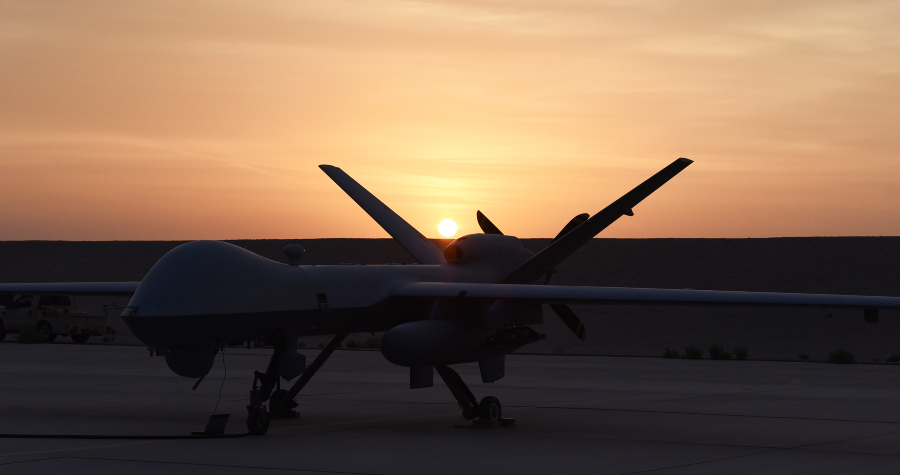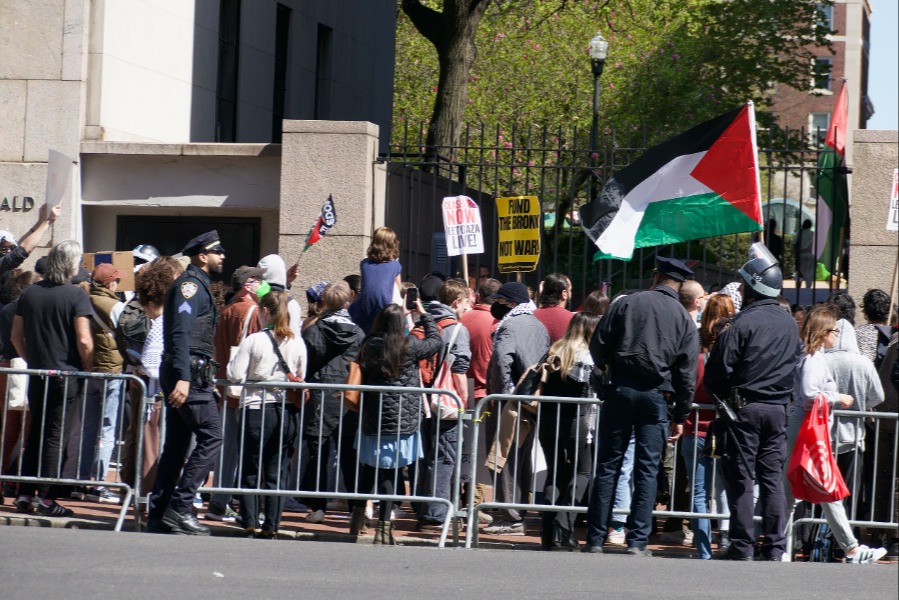Counterterrorism Jenga

Published by The Lawfare Institute
in Cooperation With

Editor’s Note: As the United States focuses on China and Russia and moves away from the Middle East, its ability to strike at terrorist groups such as al-Qaeda and the Islamic State is in question. National Defense University’s Kim Cragin examines the Biden administration’s “over-the-horizon” approach and argues that its foundations are increasingly shaky.
Daniel Byman
***
When the U.S. military pulled out of Afghanistan in August 2021, lawmakers and experts alike expressed concern that this would hinder the United States’ ability to counter al-Qaeda, the Islamic State, and other foreign terrorist adversaries. But the Biden administration rejected the idea that the military could protect the U.S. homeland only from permanent, forward-deployed, bases in the Middle East and elsewhere. Instead, President Biden stated, and the National Security Strategy reiterated, that the United States has “developed counterterrorism over-the-horizon capability that will allow us to keep our eyes firmly fixed on any direct threats to the United States in the region and to act quickly and decisively if needed.”
This ambition—over-the-horizon counterterrorism—is not unreasonable. It has been tried in the past with varying degrees of success. President Reagan approved the U.S. military’s first over-the-horizon strikes against terrorist-linked facilities in Libya with Operation El Dorado Canyon. President Clinton applied a similar logic against al-Qaeda with cruise missile strikes in Afghanistan and Sudan as part of Operation Infinite Reach. Yet even as the government goes all-in on this approach, it is removing many of the building blocks that make over-the-horizon counterterrorism feasible without compensating elsewhere for these changes. I refer to this as “counterterrorism Jenga.” The U.S. government has prioritized strategic competition with China and Russia. As a result, it is removing the “blocks” of U.S. counterterrorism, built over the past two decades. While some re-prioritization makes sense, al-Qaeda and the Islamic State have not disappeared. Policymakers need to be more deliberate about which blocks are being removed. The United States arguably can afford for the Jenga tower to become wobbly—but it shouldn’t be allowed to collapse.
The term “over the horizon” is derived from early warning, long distance, radar technology. The term simply implies that U.S. security forces or assets will continue to confront terrorist networks and groups, but they will do so from outside a conflict zone. That is, U.S. forces and assets will cross one or more international borders to execute a strike. Over-the-horizon operations can include drone strikes on terrorist operatives, training camps, or other facilities, but they also can incorporate raids. The success of these strikes and raids depends less on specific capabilities than on a methodology developed over the past 22 years, referred to in shorthand as “find, fix, finish.”
Several U.S. officials have outlined the find-fix-finish methodology in generic terms or with reference to a specific operation, most recently the strike against al-Qaeda leader Ayman al-Zawahiri on July 31, 2022, in Kabul, Afghanistan. In the first step, “find,” intelligence analysts identify and nominate an individual who poses an urgent threat to the United States, its citizens, or installations. It is relatively easy to nominate a terrorist leader, such as Ayman al-Zawahiri or Osama bin Laden. But, however satisfying, decapitation strikes generally do not halt emerging plots. Instead, practitioners often focus on finding more elusive figures, such as experienced commanders or skilled subordinates, who are in the midst of planning, orchestrating, or even executing high-profile attacks. This is more difficult. For the past 22 years, the United States has identified these terrorists chiefly from within a conflict zone and in partnership with local security forces, who have a better understanding of the people, culture, and terrain. But as the U.S. military reduces its forward presence in Afghanistan, Syria, Somalia, Yemen, and elsewhere, it is pulling blocks out of the Jenga tower. John Kirby, the National Security Council spokesman, recently stressed that the United States retains other, remote, intelligence, surveillance, and reconnaissance capabilities (ISR) that can be, and continue to be, applied to identifying terrorist threats. The tower remains standing, but without the close cooperation of forward-deployed U.S. forces and local partners, it’s somewhat more unstable.
The second step, “fix,” requires U.S. intelligence analysts and operatives to reliably predict where the previously identified terrorist will be and when. This step is what President Biden referred to when he stated that the United States could keep its eyes “firmly fixed on any direct threats.” Importantly, the terrorist also must be fairly isolated, so that the strike or raid will not cause civilian casualties. “Fixing” a target, in this sense, requires nuanced understanding of the environment and detailed intelligence on the terrorist to achieve an accurate strike or raid and avoid civilian casualties. John Brennan, the former assistant to President Obama for counterterrorism, described the decision-making process as follows:
I can tell you today that there have indeed been occasions when we decided against conducting a strike in order to avoid the injury or death of innocent civilians. This reflects our commitment to doing everything in our power to avoid civilian casualties, even if it means having to come back another day to take out that terrorist, as we have done previously.
For over-the-horizon counterterrorism, the key phrase in Brennan’s statement is “come back another day.” In his March 2023 testimony before the Senate Armed Services Committee, Gen. Michael Kurilla, commander of CENTCOM, stated that he spends 80 percent of the overhead surveillance time allocated to him simply transiting the distance between Qatar and Afghanistan. This significantly reduces the ability of U.S. intelligence analysts to “fix” a potential target in Afghanistan (and to a lesser extent in other locations). If civilians arrive in the area unexpectedly or the terrorist gets stuck in traffic, the strike is halted, but it can be more difficult to “come back another day” with an over-the-horizon posture due to the long transit times. The Jenga tower gets a little bit more unstable.
The final step is “finish.” It does not necessarily mean a U.S. military strike or raid. Sometimes local law enforcement arrest the individual. But, in the context of over-the-horizon counterterrorism, it typically refers to a military operation. Like with the other two steps, this can be accomplished from both within and outside a conflict zone, but it poses greater challenges from outside a conflict zone. For example, on Jan. 26, 2023, U.S. forces raided the Somali headquarters of Islamic State facilitator Bilal al-Sudani. Practitioners will state publicly that they prefer raids, such as the Sudani operation, because it allows them to gather additional intelligence. But during the raid, Sudani and his associates fought back, causing U.S. forces to kill him and 10 others. No U.S. forces were injured, but operations like this nevertheless pose greater risks to U.S. forces. The longer distances involved reduce soldiers’ situational awareness and make it more difficult to prepare for raids or respond to contingencies. Uncrewed drones also can be shot down, and as drones travel long distances, they are exposed to greater risk. This risk is especially evident in contested environments, such as Yemen or Syria. The Jenga tower gets even more unstable.
The cumulative effect is that the methodology—find, fix, finish—slows down when applied from an over-the-horizon posture. That’s important. The find-fix-finish methodology used today was refined during the height of the counterinsurgency operations in Iraq and Afghanistan, which allowed for a much faster pace, higher volume, and greater consistency of operations. All of these are diminished with an over-the-horizon posture. Of course, the threat posed by al-Qaeda, the Islamic State, and other foreign terrorist adversaries to the U.S. homeland is much lower today than it was eight or even 22 years ago. But it still exists. A 2020 U.S. National Intelligence Estimate assessed that the Islamic State has even started to rebound.
That’s why you increasingly see experts and practitioners—myself included—expressing their discomfort with the status of U.S. counterterrorism. It is not so much a rejection of over the horizon, per se, or at least not across all of us. It is that we are removing some blocks without bolstering others. The United States pulled out of Afghanistan but didn’t compensate by allocating CENTCOM additional ISR resources, investing in alternative strike capabilities, or expanding access to the surrounding countries. Experts are collectively wincing at the instability of the Jenga tower. We’ve gotten to the point at which my young daughter might say, “Mommy, why don’t you pull out the next block? I don’t want to touch it!





